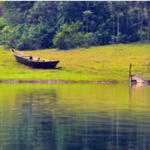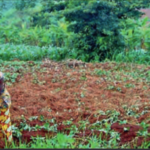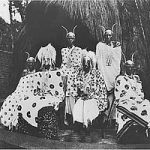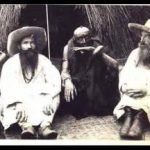XI. Tribal And Proto-Feudal Aspects Of The Chieftainship Of REMERA
If we consider the chieftainship of Remera before the various administrative reforms had their effect, some aspects are very similar to those found in tribal chiefdoms elsewhere in Central Africa, e.g., among the Bemba, Swazi, Ngoni, Sotho, and Luapula. Land tenure and land distribution, in their basic pattern, are remarkably “tribal”. Peasants and nobles both retain certain prerogatives, such as that of moving from one Hill to another until they find the protection and benefice they seek. This is important everywhere in tribal society, as well as in Remera, where political power is largely evaluated in terms of the number of followers a chieftain or patron has. It is a matter for concern to retain such followers, especially if the movements are made to the advantage of a rival neighbor.
As in a tribal chieftainship, also, arbitration seems to be the rule. If a matter cannot be settled in the lineage council, a group of neighbors, particularly elders, gather and the case is discussed and settled by them. Failing this, cases are brought to the chieftain, as head of the nuclear feudal cluster, who deals with them in the same way as would the head of a lineage. He gathers together members of the nuclear feudal cluster to hear each litigant plead his case. It is discussed by the group. As a good chieftain should, the chieftain is last to speak in such meetings. He listens carefully and feels the pulse of opinion and formulates his own “judgment” accordingly.
The prime duties of a chieftain are, in the words of the last chieftain of Remera, “to take case of the weak, the old, and the infirm; and generally, to keep everybody happy”. This is also a tribal ideal. With a European administration to satisfy also, the ability to fulfill this last obligation was very difficult. The chieftain had to play the role of an intermediary; he had to satisfy theexigencies of a demanding foreign administration while at the same time taking care to not ruffle the feeling of his constituents. For example, it was the chieftain’s duty to see to it that his constituents obeyed the directives of the Agricultural Service. He was required to bring into court anyone who did not plant a minimum area of goundnuts, or sweet potatoes, or manioc, or who did not cultivate the swamp lands in the dry season, etc. Thus, he had to satisfy his people and at the same time see to it that they carried out instructions without arousing too much ire in them. It is perhaps a gauge of the last chieftain’s ability that the number of such cases brought to court by him over the years varies in inverse proportion with the tolerance of the different Belgian agronomists. For example, the register of court cases shows in 1951 no cases involving agriculture regulations were brought into court. On being questioned about this, the chieftain readily said it was because the new agronomist that year had not pressed him and therefore le, in turn, would not press his people to carry out the regulations. But if the chieftainship bas a certain tribal aspect at the local level, there is, nevertheless, a Central Authority to reckon with. Firstly, the chieftain, as a member of the hierarchy, is, to a certain extent, a public official. Secondly, the estate attached to his office — the Hill — is treated by him as his fief. He is a client of the Mwami and he passes on parts of his own privileges to his own clients. In order to explain the mechanisms of operation of this aspect of the society, a few basic concepts will first be defined
https://uk.amateka.net/xi-tribal-and-proto-feudal-aspects-of-the-chieftainship-of-remera/https://uk.amateka.net/wp-content/uploads/2021/05/feodal.pnghttps://uk.amateka.net/wp-content/uploads/2021/05/feodal-150x150.pngModel CitizenshipIf we consider the chieftainship of Remera before the various administrative reforms had their effect, some aspects are very similar to those found in tribal chiefdoms elsewhere in Central Africa, e.g., among the Bemba, Swazi, Ngoni, Sotho, and Luapula. Land tenure and land distribution, in their basic pattern, are...BarataBarata rpierre@ikaze.netAdministratorAMATEKA | HISTORY OF RWANDA




